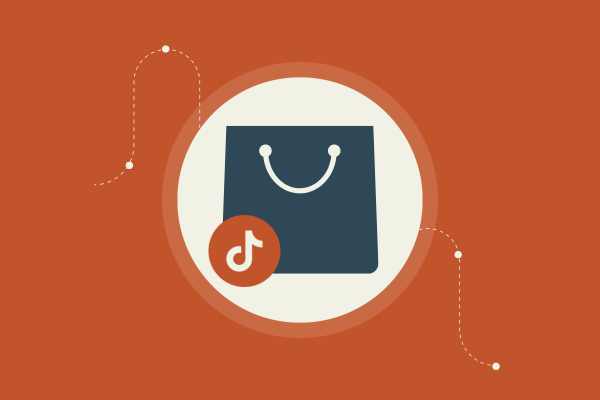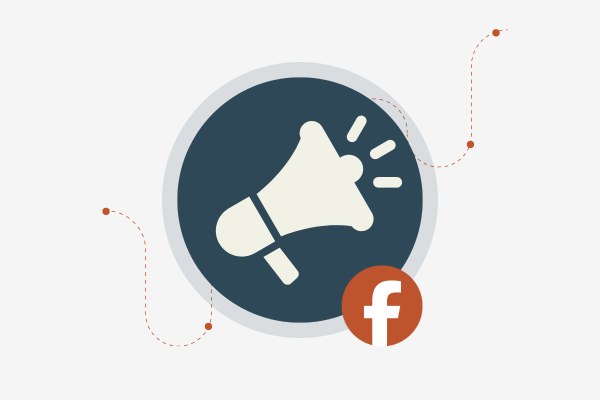What’s a Good Return on Equity for Your eCommerce Business?
Trying to figure out if your eCommerce business is doing well? A good Return on Equity (ROE) for your eCommerce business is about 15-20%, but higher is always better. ROE measures how well you use your money to make more money. It's your business's financial pulse.
ROE isn't just a number. It's the bottom line of your business. Are you making smart choices? If it's too low, it might be time to shake things up. This could involve better marketing strategies or using powerful eCommerce tools to boost performance.
Don't settle for average. Push the boundaries to enhance your business's financial health.
Key Takeaways
ROE around 15-20% is generally good for eCommerce.
Smart eCommerce strategies can improve ROE performance.
Better financial health boosts business success.
Understanding Return on Equity (ROE)
ROE is your eCommerce business's report card on how well it turns investments into profits. It reveals how effectively you're putting shareholder money to work.
The Basics of ROE and Why It Matters
Return on equity, or ROE, shows how much profit you generate with the money shareholders have invested. It's a metric that tells you if you're using their money wisely. A higher ROE means your company is efficient at generating profits.
How does it work? You take your net income, which is your total earnings after all expenses, and divide it by shareholder equity. Shareholder equity is what's left when you subtract your liabilities from your assets. This gives you a percentage.
Why should you care? Because investors love ROE. It tells them if your eCommerce business is a wise investment. A consistently good ROE can attract more investment, meaning more cash to grow your brand.
Calculating ROE in Your eCommerce Biz
Want to figure out your ROE? Easy. Use this formula: ROE = (Net Income / Shareholder Equity) x 100. Let’s break it down: net income is your after-tax profit, and shareholder equity is your total assets minus liabilities.
Let’s say, for example, your online store makes $100,000 in net income, and you have $500,000 in shareholder equity. Plug those numbers into the formula, and you get an ROE of 20%.
What does that mean? It means for every dollar investors put into your business, you’re generating 20 cents in profit. A solid ROE indicates you know how to grow your business effectively. Keep your eye on it—it's a game-changer for serious entrepreneurs.
Key Financial Concepts
To boost your eCommerce game, you've got to master some key financial tricks. Profit margins, leverage, and understanding expenses keep your business thriving.
Profit Margins and Net Income Insights
Profit margin is your business's battle gear. It shows how much cash you're keeping from every sale. Want to rule your market? Aim for high profit margins. This means slicing unnecessary costs and keeping operations lean. A fat margin means more profit even if sales dip.
Net income is your scoreboard. It's what you pocket after smashing all costs, taxes, and expenses. Monitoring net income helps you adjust strategies. Keep it high and ride smoothly through market storms. Aim for strong numbers and celebrate those wins. They’re your success proof.
Leverage and Debt Impact
Leverage is your secret weapon. It’s borrowing smarter, not harder. Using debt to amplify gains without breaking your business. A powerful tool when handled with care. Too much debt? It's like quicksand, pulling you down. Keep an eagle eye on your debt levels.
Balance is the name of the game. Embrace the right amount of leverage. It helps fuel growth and expansion. Your goal? Efficient debt management. Watch your interest rates and payment deadlines. Strong leverage keeps you agile, ready for fresh opportunities.
Understanding Expenses
Knowing your expenses is like having x-ray vision. You see where your money is flowing. Break your expenses into categories: fixed and variable. Fixed costs are stuff like rent. They’re predictable. Variable costs? These change with sales volume, like shipping.
Cutting back on unnecessary expenses pumps up your margins. A sharp focus on reducing waste puts more cash in your pocket. Track them regularly, and don’t turn a blind eye. Efficiency in expense management gives you a financial edge.
Stay financially savvy. Smart decisions about expenses pave the path for long-term success. When you master these concepts, you’re set to conquer and thrive in your eCommerce empire. Make those numbers dance to your tune.
Analyzing eCommerce Performance
Looking at your eCommerce performance involves checking profitability ratios, understanding metrics like ROI and average order value, and knowing how important the conversion rate is. Get these right, and you're on your way to success.
Evaluating Profitability Ratios
Profitability ratios are key. They help you see how well your business uses its resources to make money.
Start with Return on Assets (ROA). It's about getting the most out of what you have. ROA tells you how efficient you are at generating profit from your assets.
Then there's Return on Capital Employed (ROCE). This is all about using your capital wisely. It shows how much profit you're making from the money invested in the business. High ROCE? You're doing great.
These numbers give a snapshot of your business health.
Ecommerce ROI and Average Order Value
You want to know if everything you do is worth it, right? Enter eCommerce Return on Investment (ROI). It's your measure of profit against the money you put in.
To calculate eCommerce ROI:
Find out how much you earned.
Subtract what you spent.
Divide by what you spent and multiply by 100.
That’s your ROI percentage.
Next up, Average Order Value (AOV). AOV tells you the average dollar spend each time a customer places an order. Boosting this can increase your revenue without needing more customers. That's gold.
The Relevance of Conversion Rate
Conversion Rate is your MVP. It shows the percentage of visitors who take action—like buying.
Sure, you get lots of traffic. But are those visits turning into sales? A higher conversion rate means better use of your traffic.
Boost your conversion rate by improving your website. Make it easy for visitors to buy. Clear calls to action, fast loading times, and mobile-friendly designs can make a difference.
Track these metrics to know where you stand. They’re the backbone of a thriving eCommerce business. Keep an eye on them to steer your company in the right direction.
Critical Metrics for eCommerce
Nailing the right eCommerce metrics can skyrocket your business. Let’s unpack what's crucial for you to track, like your KPIs, customer acquisition costs, and customer lifetime value. These metrics help you optimize strategies and boost profits.
Key Performance Indicators (KPIs)
KPIs are your business's heartbeat. They tell you if you're killing it or need a wake-up call. Focus on metrics like conversion rate and average order value. Conversion rate shows how many visitors turn into buyers. A higher rate means more orders without more cost.
Average order value (AOV) tells you how much the average customer spends per order. Increase it with upselling or product bundles. When you pump up the AOV, you boost revenue fast. Don’t miss out on keeping tabs on these numbers.
Use tools that track these KPIs in real-time. Stay agile and adaptable, and let the numbers guide you to profit. The more you track, the smarter your decisions will be.
Why Monitor Customer Acquisition Cost?
Customer Acquisition Cost (CAC) is what you spend to get a new customer. If you’re spending more than what they’re worth, you’ve got problems. Lowering CAC means you can spend more on growth without stressing about profit.
Track everything from ad spend to discounts. It’s all part of CAC, and missing just one part can throw everything off. Compare your CAC with your customer lifetime value. A healthy business sees LTV way higher than CAC.
Analyze your marketing channels. Some might cost less but bring in more buyers. Double down on those. Don’t let a high CAC drain your profits. It’s all about spending smart.
Lifetime Value (LTV) of a Customer
Customer Lifetime Value (LTV) is how much a customer is worth to you over time. LTV lets you forecast revenue and figure out how much you should spend on acquisition. Higher LTV means more dollars without needing new customers.
Calculate it with average purchase value, purchase frequency, and customer lifespan. Find patterns in your best customers and target more like them. Boosting LTV means more wiggle room in your budget for growth efforts.
Tools and data give you insights into upping that LTV. Personalize the customer journey to improve satisfaction and loyalty. Keep an eye on LTV, and don't take your eyes off it if you want sustainable growth. LTV is not just a number; it’s your future earnings in disguise.
Improving Your ROE
To boost your eCommerce business's return on equity (ROE), focus on smart strategies. These include using tactics like leveraging debt, making wise capital allocation choices, and optimizing costs. A good ROE targets around 20%, signaling a strong, well-managed business.
Tactics to Boost ROE
First off, consider using financial leverage. By increasing debt relative to equity, you can amplify returns. This moves the needle on ROE but be cautious with the level of risk you're bringing on board. Balance is key.
Another tactic involves upping your profit margins. Fixate on cutting costs or refining pricing strategies. Every dollar saved or earned goes straight to improving ROE. It’s a direct route to boosting profit without extra hassle.
Asset turnover plays a role too. Make your assets work harder. Sell more without adding additional assets. Efficiency here means more revenue with the same resources, pumping up ROE numbers.
Smart Capital Allocation Decisions
As a business owner, being smart about where you put your money is crucial. Allocate capital towards high-return opportunities. This means putting your money in places that’ll generate the most bang for your buck.
Reinvest profits wisely. Identify projects that will pay off with higher returns. This is all about ROI. The higher, the better to hit that sweet 20% ROE mark.
Dividends deserve a look too. Retaining earnings for growth cuts down external financing needs. Use this internal funding for strategic investments.
Cost Optimization Strategies
Let's talk costs now. Lowering costs directly impacts your bottom line. First up: analyze operational expenses. Find areas where spending can be trimmed without cutting corners on quality.
Focus on your gross margin. Maximize this by reducing COGS—your cost of goods sold. Get suppliers to give better rates. Efficient production also means higher gross margins.
Consider automation. Implementing smart tech cuts labor costs and boosts productivity. Lower costs mean better profitability without skyrocketing efforts.<|vq_10769|>
Marketing Tactics to Drive Success
Your eCommerce business can soar with the right marketing tactics. Zeroing in on the power of a solid marketing campaign, boosting engagement through email marketing, and maximizing gains with social media can ramp up your return on equity.
Effective eCommerce Marketing Campaigns
You gotta have a killer marketing campaign. It’s all about understanding your audience and hitting them where it counts. Use tools to analyze buyer behavior and tailor your messaging. The Keyword Magic Tool can help you target the right keywords, pulling in traffic and boosting sales.
Flash sales, discount offers, and “limited time” deals can spark urgency. People love a good deal. Combine these with attention-grabbing visuals, and you’ll have a recipe for selling more.
Tracking your campaigns? Essential! Measure the impact and adjust strategies. Keep what works, ditch what doesn’t. Success is just around the corner.
Email Marketing and Customer Loyalty Programs
Email is not dead, my friend. It’s alive and kicking in eCommerce. Build an engaged list and nurture those relationships. Offer exclusive deals, sneak-peeks, or special discounts. People love feeling special.
Design your emails to look clean and sharp. Use catchy subject lines that compel opens. Your goal? Drive them back to your site and keep them shopping.
Don't forget the power of a loyalty program. Reward customers for sticking around. Points, perks, and tier-based rewards can incentivize repeat purchases. The more they buy, the more they earn. You win, they win.
Social Media Insights and ROAS
Social media? It’s a gold mine. Use platforms like Instagram or Facebook to reach your audience where they hang out. It's all about engagement and interaction. Post regularly, share stories, and respond quickly.
Keep an eye on your Return on Ad Spend (ROAS). When you invest in ads, you need to know what's coming back. Calculate how much revenue each dollar spent brings in. Smart moves? Invest more where your ROAS is high. Pull back if it's lagging.
This is your moment. With the right strategies, you can elevate your social media game and see those returns soar.
Mastering E-commerce Tools
You need the right tools to boost your e-commerce game. These tools help you track performance, understand customer behavior, and fine-tune your strategy without the guesswork.
Leveraging an Ecommerce Dashboard
An ecommerce dashboard serves as your command center. It shows you all the important stuff like sales, customer activity, and marketing performance in one place. Picture this: a single screen showing you what’s selling, what’s not, and the why behind it.
Key features to look for in a dashboard include real-time data updates, customizable views, and integration with other tools. This keeps you on top of changes and helps you make decisions fast.
A good dashboard can save you hours. Instead of juggling spreadsheets and reports, you get a clear vision. Want to track your marketing efforts? Check conversion rates and see which campaigns hit the mark. Use this powerful tool to understand your business better and drive growth efficiently.
Google Analytics for eCommerce
Google Analytics is a goldmine for anyone in e-commerce. It reveals what’s happening on your site, where visitors come from, and how they behave.
Start with the ecommerce tracking features. These show you data on product sales, revenue, and transaction details. You see what products are popular and which ones need a push.
You can break down customer journeys with Google Analytics. Find out where they drop off and fix those roadblocks to increase sales. Get insights into how your ecommerce marketing efforts are working. This tool goes beyond mere traffic data; it’s about understanding behavior. Track campaigns, analyze them, and improve strategies based on actual performance.
Google Analytics guides you with precision. Use the data to make informed decisions and take your online store to the next level.
Fundamentals for Financial Health
To keep your eCommerce business on solid ground, you need to focus on key financial measures. These include maintaining a good balance between your debts and assets, and understanding the value of your shareholders’ equity.
Debt to Equity and Other Financial Ratios
Think of the debt to equity ratio as your financial pulse. It tells you how much of your business is funded by debt versus what's financed by shareholders' money. A lower ratio means you're not relying heavily on debt, which is usually a good sign.
If your debt is too high compared to your equity, it might be risky. Investors like when you have a healthy balance. It shows you're using your funds wisely and not borrowing too much. Keeping a good ratio helps attract more investment and lowers financial stress.
Stay on top of other financial ratios like the current ratio and quick ratio too. These numbers help you see if your business can pay off its short-term debts without a sweat. Track these regularly to keep your financial health in check.
Shareholders' Equity and Its Importance
Shareholders' equity is like your business’s backbone. It’s the total assets minus your total liabilities. This figure shows the real value of your business after paying off debts. It’s what belongs to the shareholders.
When equity is high, it means your business is financially strong. Investors get happy seeing solid equity because it signals long-term stability. Equity financing, which involves raising money from investors in exchange for shares, can boost your business, giving you cash without increasing debt.
Understanding the importance of shareholders’ equity is essential. It’s a sign of health and potential growth. If you manage it well, shareholders will trust you more, and your business will flourish. Keep an eye on this number, and use it to steer your business forward.
Optimizing the eCommerce Experience
To boost your eCommerce game, focus on cutting down cart abandonment and ramping up upsell opportunities. Your customer experience can make or break your business. Dial these in and watch your return on equity climb.
Reducing Cart Abandonment Rate
Cart abandonment is the silent killer of eCommerce sales. Imagine this: a customer fills their cart and bails. Ouch. You’ve got to get them back. How? Simplify the checkout process. Make it smooth and quick. Offer multiple payment options. Customers love choice.
Another trick? Exit-intent popups. Use them to offer a small discount if someone tries to leave. You’ll be surprised how many come back. Also, consider sending cart reminders. A nudge via email or text saying, “Hey, don’t forget about us!” can work wonders.
Upselling and Improving Customer Experience
Upselling is your secret sauce. You’ve got a customer ready to buy. Show them something better or additional.
Bundle deals are golden. Pair items that make sense together. You’re not just upselling here. You’re improving their experience.
Personalization goes a long way. Use data to suggest products they'll love.
It’s like having a personal shopper. Also, invest in post-purchase follow-ups. Ask for feedback. Show you care beyond the sale. Make their experience unforgettable.







